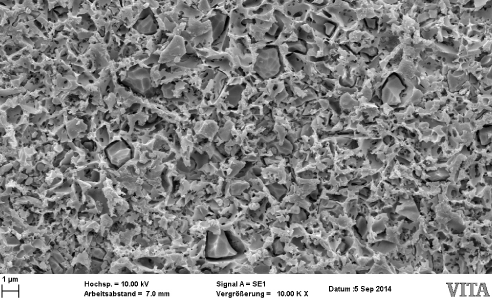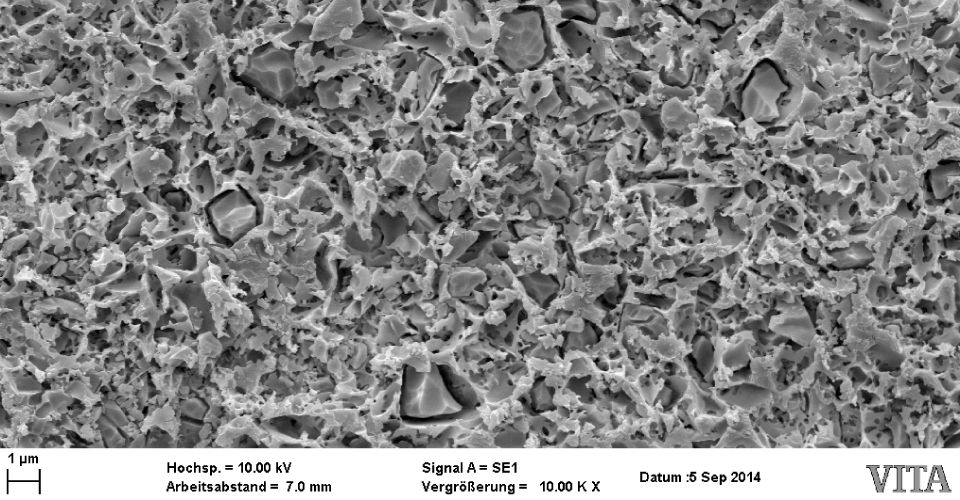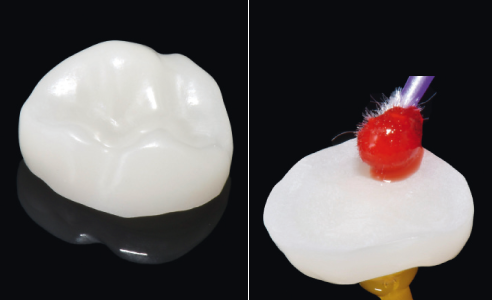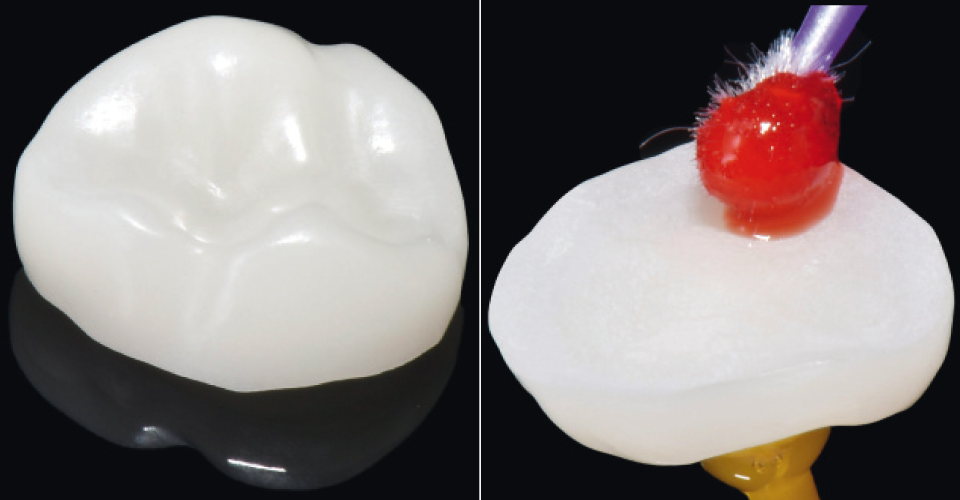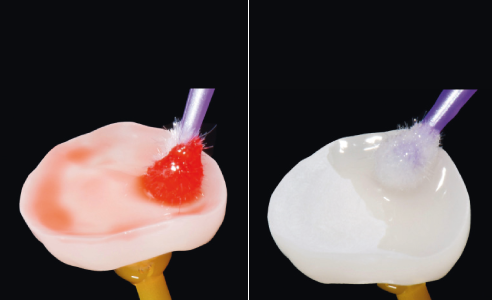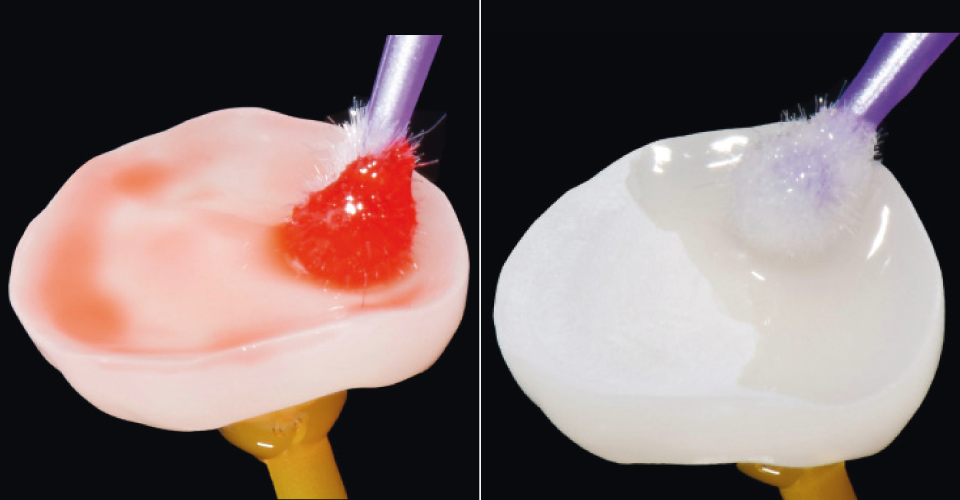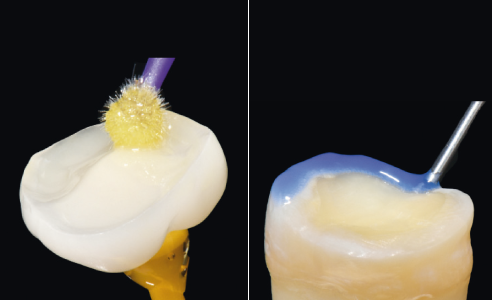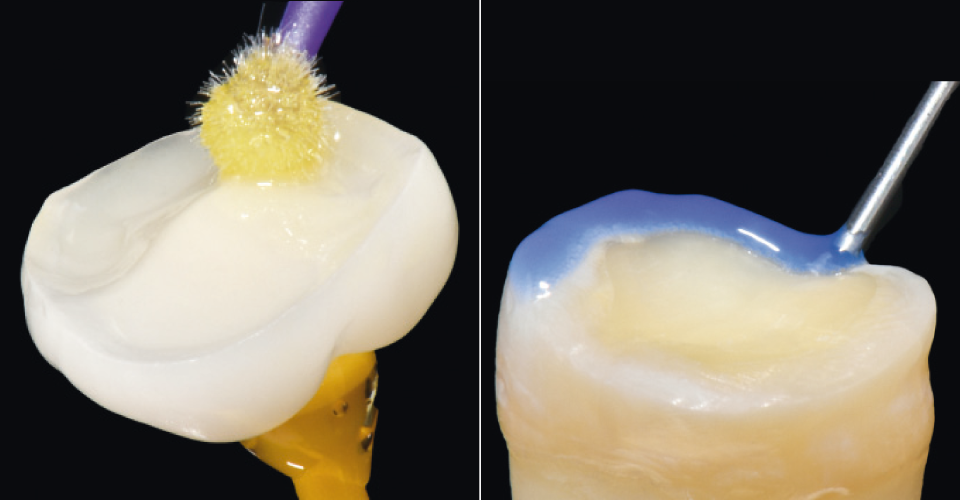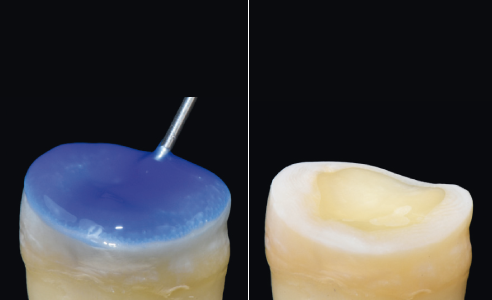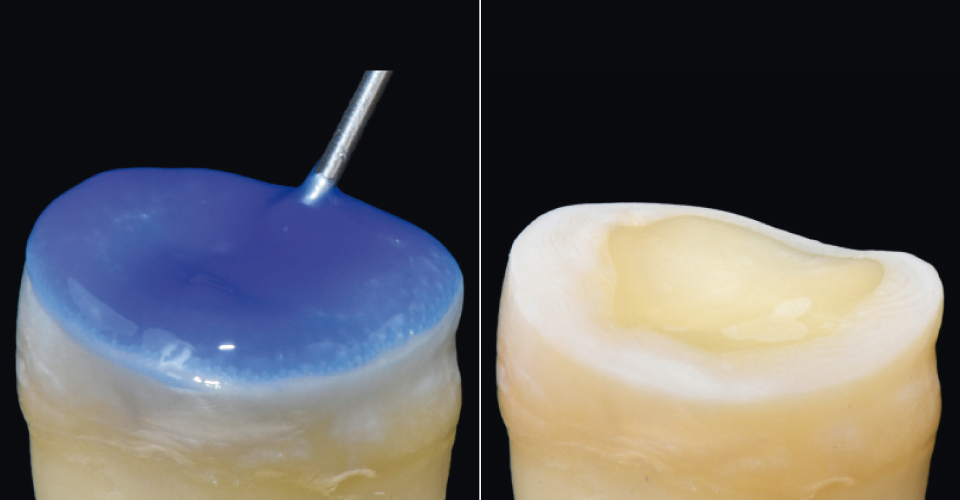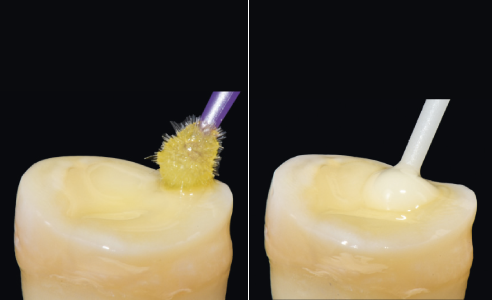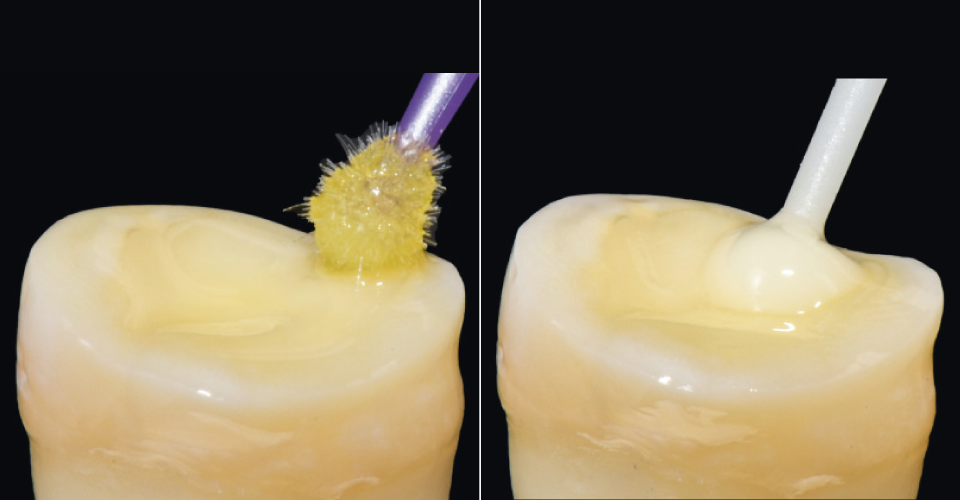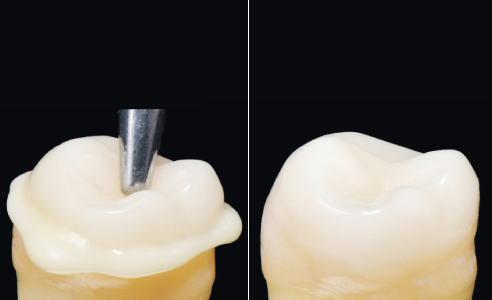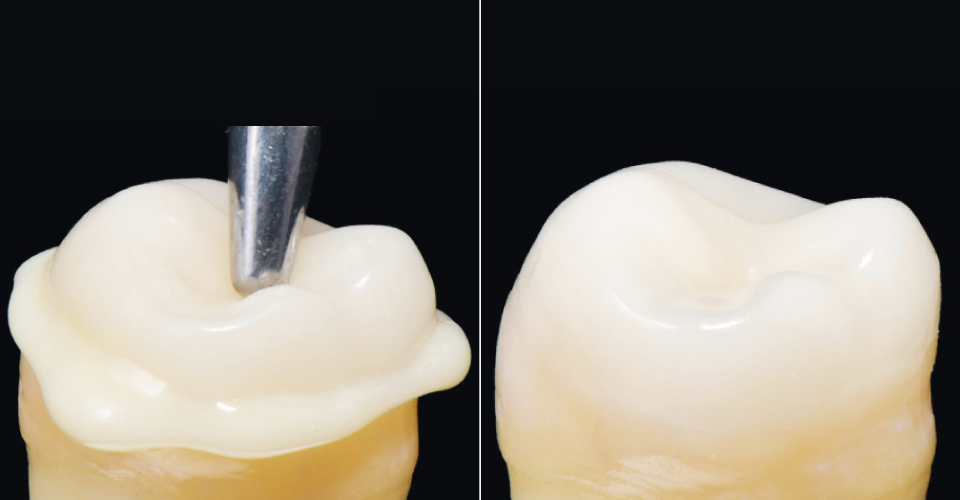Harmonious luting specific to the material: hybrid ceramics versus composites
Different materials require specific luting processes. This means that composites and ceramics have to be conditioned differently. VITA ENAMIC (VITA Zahnfabrik, Bad Säckingen, Germany) has a unique dual ceramic, polymer network structure with a high ceramic content (86 weight %). This is why conditioning can take place in a similar way to feldspar ceramic. New blanks on the market are sometimes referred to as hybrid ceramics. However, these are highly-filled CAD/CAM composites. In the following, Dr. Sebastian Horvath (Jestetten, Germany) explains the material-specific luting for different materials.
DV: Why is adhesive cementation important for indirect ceramic restoration?
Dr. Sebastian Horvath: The adhesive bond between the tooth and the restoration is essential for the long-term clinical success of purely ceramic restorations. It increases the load-bearing capacity of both the restoration, as well as the tooth. Microleakage is reduced, and the fit of the restoration is guaranteed. A prerequisite for this is a luting process that is adapted to the material.
DV: What protocol is to be used for hybrid ceramics according to the manufacturer's instructions?
Dr. Sebastian Horvath: Thanks to the dominant ceramic network, the material can be pre-treated in a similar way as with classical feldspar ceramics. First, the surface must be etched for 60 seconds with hydrofluoric acid (5%) and then carefully cleaned with water. A silane coupling agent is then applied and a bonder is applied afterwards, depending on the system.
DV: What clinical advantages can be expected from this material-specific protocol?
Dr. Sebastian Horvath: The protocol is similar to that of feldspar ceramics and is well-established. No new technique or procedural steps have to be learned, which means that no adjustment period is necessary. In addition, the hydrofluoric acid etching allows for excellent micromechanical retention. As a general rule, materialspecific protocols are essential for secure bonds and for predictable, successful treatments.
DV: How should modern, highly-filled CAD/ CAM-composites be attached according to manufacturer's instructions?
Dr. Sebastian Horvath: These materials resemble conventional composites in their basic structure. They do not have a ceramic network. They are not etched with hydrofluoric acid, but are instead radiated with aluminum oxide. In the end, a silane coupling agent is also applied, followed by the application of a bonder, depending on the system.
DV: What is important to keep in mind for conditioning the hard tooth substance before adhesive incorporation?
Dr. Sebastian Horvath: Adhesive systems have been further refined and now ensure an excellent bond despite the simple treatment process. That minimizes sources of error and ensures predictable results. For the past three years, we have had very good experiences using a one-bottle system in conjunction with a desensitizer.
Fig. 1: VITA F&E, Bad Säckingen, Germany; Publication: A. Coldea, B. Just, E. Bojemüller, J. Fischer (2015). Shear bond strength of adhesively bonded hybrid ceramic. Conference paper, IADR / AADR / CADR General Session, At Boston, Mass., USA.
Fig. 2a – 7b: Photographic documentation of the luting steps from Dr. Sebastian Horvath, Jestetten, Germany.



